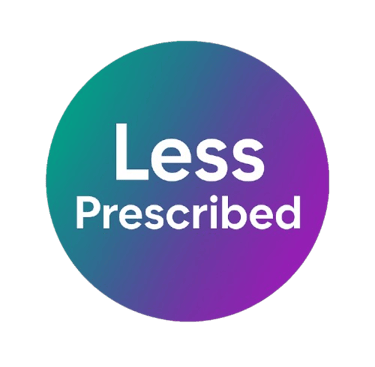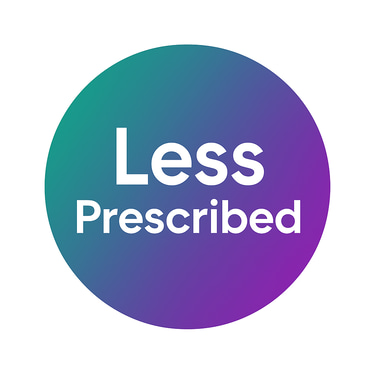How to Talk to Your Doctor About Pain Without Being Misunderstood
For many patients living with chronic pain, one of the hardest parts isn’t just the pain itself — it’s being believed. In a medical landscape shaped by opioid restrictions, stigma, and fear, even a simple pain consultation can feel like an interrogation. But communication can be a powerful tool for both sides. When patients approach these conversations with preparation and openness, it helps doctors see the full picture — and builds trust in a system that has grown increasingly cautious. At LessPrescribed, we’ve gathered insights from pain specialists, behavioral researchers, and patient advocates to help you talk about your pain clearly, safely, and effectively.
LessPrescribed Editorial Team
11/10/20252 min read


Prepare Before the Appointment
Doctors work under time pressure. A focused, well-prepared patient helps both parties make the most of limited time.
What to do:
Keep a Pain Diary: Track when your pain occurs, how long it lasts, and what affects it (weather, activity, stress, etc.).
Document Side Effects: Note what medications or therapies helped — or didn’t.
List All Medications: Include over-the-counter drugs and supplements. This shows responsibility and avoids potential interactions.
According to a 2024 Johns Hopkins University survey, patients who brought written records to appointments were 45% more likely to report satisfaction with their pain management plan.
Use Clear, Descriptive Language
Phrases like “it hurts a lot” don’t tell doctors much — they need specifics.
Instead, describe your pain in terms of location, intensity, and impact.
Try using the “PAIN” method:
Place — where it hurts
Amount — how bad it feels (1–10 scale)
Influence — what makes it better or worse
Normal — how it affects your daily life
This makes your experience measurable, not emotional — helping doctors respond clinically without losing empathy.
Address the “Opioid Fear” Directly — Calmly
It’s no secret that doctors are cautious.
Many fear losing their license, being flagged by pharmacies, or being accused of overprescribing.
If pain medication is part of your history, bring it up first — honestly and confidently.
You can say:
“I understand the regulations have changed. I’m open to whatever approach you think is safest, but I also want to make sure my pain is managed.”
That simple line acknowledges the doctor’s concerns while keeping your needs front and center.
Discuss Alternatives — But Don’t Accept “Nothing”
If your doctor can’t or won’t prescribe your usual medication, ask what else can be done.
In 2023, a National Pain Advocacy Center report found that 62% of patients who lost opioid access weren’t offered any alternative treatment plan — no physical therapy, no pain management referral, nothing.
You have a right to options.
Ask about:
Physical therapy or pain management clinics
Non-opioid medications (e.g., gabapentin, duloxetine)
Cognitive-behavioral therapy for chronic pain
Specialist referrals
Being open to alternatives shows cooperation — but it also keeps the focus on care, not compliance.
Follow Up and Document Everything
After your appointment:
Write down what was discussed and agreed upon.
Keep copies of prescriptions, notes, or referrals.
If your condition worsens or medication is changed, log the effects.
This protects both you and your doctor, making every decision traceable and transparent.
In some states, doctors are now legally encouraged to document shared decision-making — meaning your input matters.
Know Your Rights — and Use Your Voice
You are not asking for pity — you are asking for treatment.
Chronic pain is recognized as a legitimate medical condition by the National Institutes of Health (NIH).
If you are dismissed or denied care without explanation, you can:
Request a copy of your medical records.
Ask for a referral to another provider.
Contact a patient advocate or state medical board for guidance.
Most importantly, don’t give up.
The healthcare system is evolving — slowly — but your persistence helps drive that change.
A Conversation, Not a Confrontation
Talking about pain shouldn’t feel like defending yourself.
It should feel like what it’s meant to be: a partnership.
When patients bring data, honesty, and calm communication — and doctors bring compassion and expertise — pain care becomes possible again.
At LessPrescribed, we believe empathy and evidence can coexist.
Change starts not just with policy, but with conversation.
This website sheds light on their experiences, the ethical dilemmas faced by healthcare providers, and the policies driving these decisions.
Our goal is to foster understanding, balance safety with compassion, and give a voice to those affected by
the unintended consequences of reduced opioid prescribing.
USA
quick links
hello@lessprescribed.com
+1-555-123-4567
© Copyright 2025 Less Prescribed. All rights reserved. Privacy Policy


